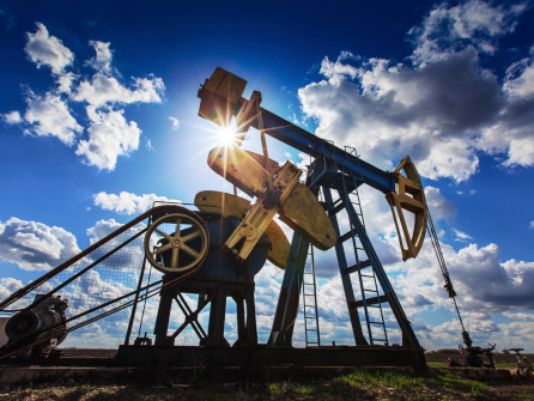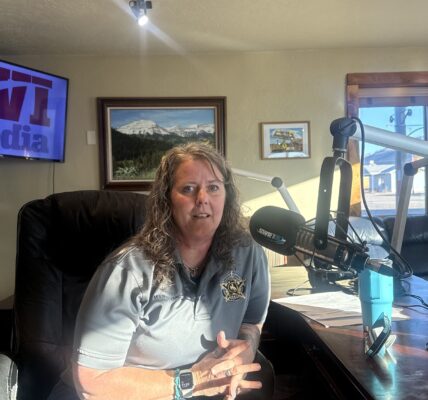By Nicole Pollack
Casper Star-Tribune
Via- Wyoming News Exchange
CASPER — Buoyed by unexpectedly high oil and gas prices, revenue collected by Wyoming during the 2021 fiscal year far outstripped earlier estimates.
After FY 2021 revenues exceeded the Consensus Revenue Estimating Group (CREG)’s January forecast by $248.2 million, CREG revised its projections for the next three fiscal years upward by a total of $596.9 million.
The October report follows two interim updates, published in April and July, which both indicated that last year’s revenue would be significantly higher than anticipated.
This time around, CREG accommodated the uncertainty and volatility of the pandemic-shaken economy into the October report by modifying its representation of high and low revenue scenarios, in an effort to allow for ongoing shifts as the market continues to stabilize.
“We live in volatility in the energy markets,” said Kevin Hibbard, director of the State Budget Department and co-chairman of CREG. “There’s going to be volatility into the future.”
The biggest part of the forecast increase impacts the current fiscal year, FY 2022, Don Richards, budget and fiscal manager for the state’s Legislative Service Office and the other CREG co-chairman, told the Joint Appropriations Committee on Monday. Wyoming’s fiscal year runs from July 1 to June 30.
“Given that we’re already three months into that fiscal year, there’s a higher level of confidence we have with that increase,” Richards said. “Our increases in ‘23 and ‘24 are more muted.”
Oil and gas prices soared earlier this year as demand recovered from the pandemic crash more rapidly than supply. The resulting increase in state revenue, which has been driven primarily by the high price of oil, is expected to taper as supply returns.
“There is a start of a theme developing here with oil,” Richards said. “Near-term, we’re experiencing substantial increases, and those have been incorporated into our forecast. In the intermediate to longer term, we are returning much more closely to the prior long-term forecast.”
Oil makes up a growing share of extraction in the state. Even as the market settles, it’s expected to contribute half of Wyoming’s severance taxes by 2025, according to the report.
CREG members agreed on most aspects of the October forecast: They expect oil production to grow and coal production to decline in the coming years. Their expectations diverged, however, on natural gas production, which has been falling steadily for the last decade. It’s not yet clear how significantly additional natural gas production from new oil development will offset the decline of older natural gas wells.
After months of inflated fuel costs, and as ratepayers now wait for their natural gas bills to spike this winter, the conditions leading to the state’s strong FY 2021 returns seem clear. The market looked very different in January.
“The economy’s been on a ride that’s unlike anything we’ve had before,” said Rob Godby, an economics professor at the University of Wyoming and a member of CREG. “The big surprise in the CREG report is how quickly revenues have rebounded. But they’ve rebounded because of a lot of unexpected actions.”
Among those factors, he said, were the passage of the American Rescue Plan Act and subsequent COVID-19 relief packages, which funneled trillions of dollars into the U.S. economy, accelerating the subsequent reopening.
“You’ve got pre-pandemic demand, but you don’t have pre-pandemic supply, and that’s driven up prices,” Godby said.
Drilling activity was slow to respond to the reopening of the economy, which strained limited fuel supplies and caused the market to swing from negative oil prices 18 months ago to the highest oil prices seen in a decade.
Natural gas prices are also higher than they’ve been in years, with the year’s average pushed up even further by the extreme costs resulting from Texas’ February weather event. In hindsight, the outcome can be understood, Godby said, but “a lot of what’s happened in the pandemic is behavioral, and behavioral outcomes are very hard to predict.”
Much of Wyoming’s revenue flows through the general fund, which operates like a checking account and pays for discretionary expenditures. Some revenue goes into the budget reserve account, which more closely resembles a savings account and can be used to compensate for general fund deficits.
In total, about half of general fund revenue currently comes from the minerals sector.
The size and scale of the state’s economic turnaround “just goes to show you just how dependent our economy is on natural resource and energy revenues, both directly and indirectly,” Godby said.
And alongside revenue from oil, gas and coal, which saw a temporary, expected boost as gas prices climbed, revenue from sales and use taxes also surpassed projections.
That’s partly because a summer of record-breaking tourism poured money into the state, while demand for goods skyrocketed as services became scarce, he said.
The report found that the largest growth of sales and use taxes occurred in counties that had significant wind development or were less reliant on extractive industries, particularly Albany, Lincoln, Carbon and Washakie. Sales and use taxes fell substantially in counties that depend more heavily on mineral extraction, including Niobrara, Sublette, Converse and Campbell.
Overall, revenue from sales and use taxes is expected to remain higher than previously forecast for the next several years.
The January report underestimated revenue for K-12 funding, too, but by a much smaller margin; it still forecasts a funding deficit in the future. But the October report’s total upward revision of $845.1 million isn’t the only money available.
Because Wyoming’s economy hasn’t yet returned to pre-pandemic levels, the state has the option to use roughly $500 million in federal stimulus money for general fund expenditures.
After Gov. Mark Gordon presents his 2023–2024 budget on Nov. 15, he’s expected to announce in December how the state plans to distribute that nearly $1.4 billion in unanticipated funds, including how much — if any — will go toward the general fund.
“Agencies have been asked to prepare their budgets without consideration of ARPA money,” said Michael Pearlman, Gordon’s director of communications. “That will be considered separately as we go forward.”
Gordon remains committed to crafting a “frugal” budget, Pearlman said.
“The CREG report and all the information that he’s getting, he’s considered carefully, but also seen as a function of Wyoming’s challenges when it comes to consistent revenues.”






